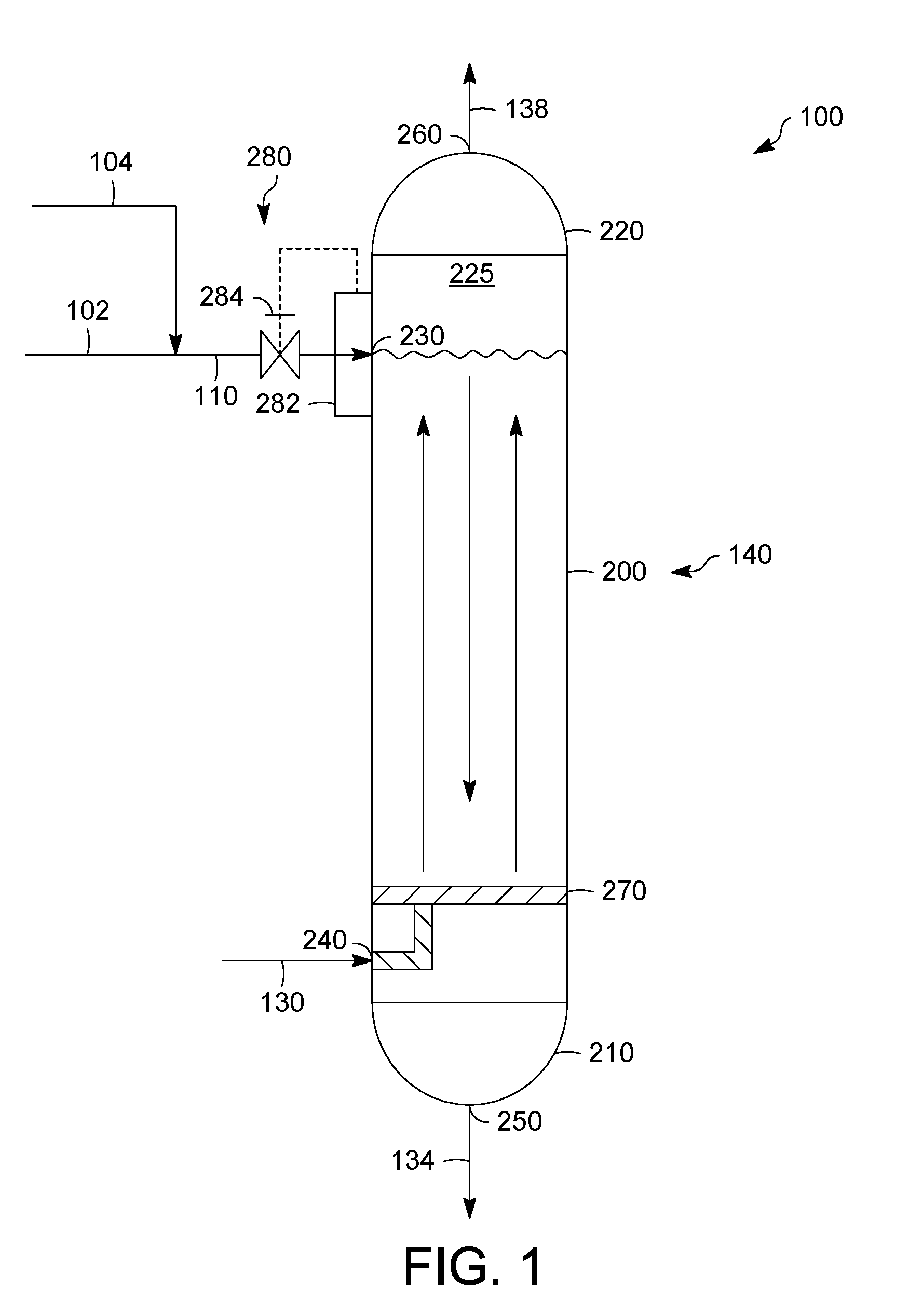System and process for reacting a petroleum fraction
a petroleum fraction and system technology, applied in the field of system and process for reacting petroleum fractions, can solve the problems of low hydrogen purity, co-current upflow design can be susceptible to solid accumulation, co-current upflow can suffer, etc., to achieve the effect of reducing the number of reactions
- Summary
- Abstract
- Description
- Claims
- Application Information
AI Technical Summary
Benefits of technology
Problems solved by technology
Method used
Image
Examples
Embodiment Construction
[0018]Referring to FIG. 1, an exemplary system 100 for hydrogenating one or more unsaturated aromatic and non-aromatic compounds, converting at least one hydrocarbon compound comprised in, e.g., pitch, and / or removing at least one of nitrogen and sulfur from one or more hetero-compounds in a petroleum fraction is depicted. The system 100 can include a bubble column reactor 200 that can receive a first feed 110 and a second feed 130. The first feed 110 can include a petroleum fraction stream 102 combined with one or more catalyst particles in a catalyst stream 104. A combination of the petroleum fraction stream 102 and the catalyst stream 104 can form a solid-in-liquid suspension as the first feed 110. Typically, at least about 90%, by volume, of the petroleum fraction stream 102 has a boiling point of at least about 300° C., desirably over about 520° C., and optimally over about 524° C., as determined by ASTM D-1160-06. The petroleum fraction stream 102 can include a vacuum residue,...
PUM
 Login to View More
Login to View More Abstract
Description
Claims
Application Information
 Login to View More
Login to View More - R&D
- Intellectual Property
- Life Sciences
- Materials
- Tech Scout
- Unparalleled Data Quality
- Higher Quality Content
- 60% Fewer Hallucinations
Browse by: Latest US Patents, China's latest patents, Technical Efficacy Thesaurus, Application Domain, Technology Topic, Popular Technical Reports.
© 2025 PatSnap. All rights reserved.Legal|Privacy policy|Modern Slavery Act Transparency Statement|Sitemap|About US| Contact US: help@patsnap.com



